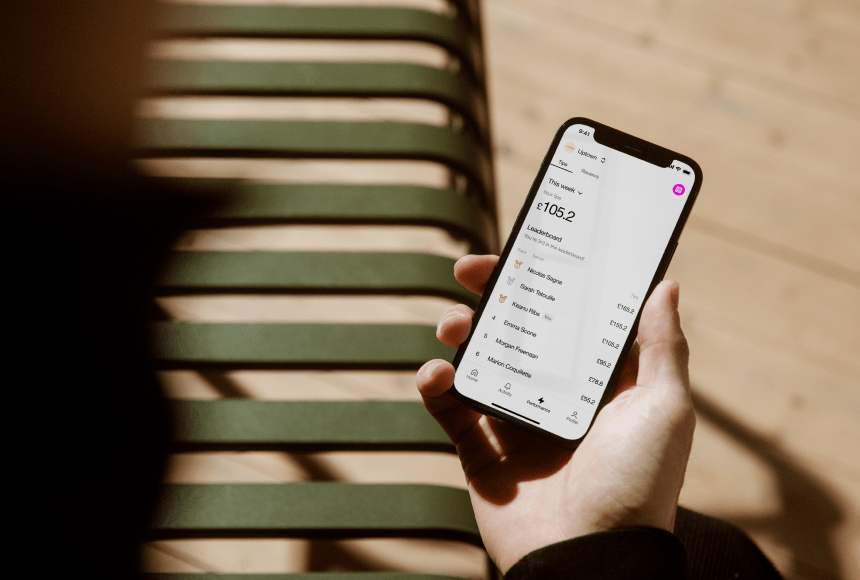
Rethinking Payment to Boost Your Restaurant’s Efficiency and Profits
Stepping Beyond the Conventional Card Machine
Most restaurant owners have lived with the same basic card terminal for years. You know the drill: a handheld or countertop device that can process chip-and-PIN, take contactless, and — on good days — print a tidy receipt. It does its job, right? So why consider a “smart” payment terminal?
The reality is that next-generation devices can do far more than process payments. They can speed up your turnover, help servers earn bigger tips, reduce admin overheads, and even integrate with your point-of-sale system. That’s a giant leap from a simple “card accepted” machine. Yet many owners hesitate, wondering if upgrading is worth the cost and learning curve.
In this article, we’ll explore the key differences between smart payment terminals and their classic counterparts, highlighting the tangible benefits that can help your restaurant flourish. If you’re tired of your old device feeling like a 20th-century relic — or if you’re just curious whether a modern solution can measurably lift your bottom line — read on.
The Basics: Classic Payment Terminals vs. Smart Ones
Let’s define terms. A “classic payment terminal” (in French, terminal de paiement électronique classique) typically has:
- A simple interface: Possibly just a small LCD screen and a numeric keypad.
- Limited functions: Swiping or tapping cards, printing receipts, and occasionally storing transactions for later retrieval.
- No direct POS integration: Staff might re-enter amounts on the device if the total isn’t automatically sent, risking keying errors.
Meanwhile, “smart” payment terminals can feature:
- A touchscreen or advanced UI: Letting servers view an order summary, apply discounts, or handle tips in one place.
- Connectivity options: Wi-Fi, 4G, or Bluetooth, possibly linking straight to your point-of-sale or cloud-based reporting.
- Extra apps and features: Some run an operating system akin to a smartphone, enabling loyalty or analytics apps, custom tip prompts, and more.
In short, the difference is like switching from a basic push-button phone to a modern smartphone. Sure, the old device can make calls (or accept card payments), but the latter can host email, navigate maps, take photos, and run social media. The bigger question is how these capabilities impact a busy restaurant.
1. Speeding Up the Checkout Process
In a fast-paced hospitality environment, each minute saved per table can be precious. Classic machines often involve multiple steps:
- Enter the total
- Wait for the device to connect
- Print a receipt
- Collect a tip (perhaps in cash or typed in by staff)
Conversely, a smart payment terminal typically:
- Pulls in amounts automatically from the POS: No extra typing. The final check is already displayed, so your team just confirms it.
- Shows tip prompts: Guests can pick a percentage or set amount, removing awkward staff questions about gratuities.
- Offers digital or paper receipts: Speeding up the final handshake so your server can pivot to the next table.
When every second counts — especially during weekend rushes — fewer keystrokes and near-instant approvals mean guests can pay faster and leave on a positive note. That leads to quicker table turnover and a direct boost to your revenue potential.
2. Enhancing Tipping for Higher Staff Morale
Tips are a vital component of many restaurant pay structures, motivating servers and helping you retain talent in a competitive industry. With a standard terminal, diners might see a small prompt to add a tip (if you’ve set it up), or the server might mention it verbally. That can be awkward or easy to skip.
A modern device makes the process smoother:
- Transparent Tip Options: A friendly prompt offering 10%, 12.5%, 15% or “other” can raise average tip amounts. According to BigHospitality (BigHospitality data), digital tip suggestions often result in more generous gratuities.
- Fewer Awkward Conversations: The device does the asking, so staff can focus on service rather than fishing for tips. Diners retain a sense of control, too.
Higher tips elevate staff morale and reduce turnover. When employees see their efforts rewarded through consistent gratuities, they’re more inclined to provide stellar service, leading to happier customers and a cycle of positivity that fuels your reputation.
3. Cutting Down on Admin and Errors
In many restaurants, the end-of-day routine involves cross-checking each transaction, verifying totals, and ensuring any tips are correctly allocated. A classic terminal often remains disconnected from the rest of your system, requiring separate reporting. That’s double the work and double the chance for mistakes.
A smart payment terminal, on the other hand:
- Syncs with Your POS: The minute a transaction is completed, the main register knows. That means no manual input or separate receipt tracking.
- Logically Updates Inventory (if integrated): If your device links to the POS, you can track sold items in real time without staff forgetting to note anything.
- Combines Tips in Automatic Calculations: No more tapping tip totals after each shift. The device can store those figures and produce an accurate breakdown instantly.
Aside from the time saved, such automation reduces the risk of human error or fraud. Everyone benefits when your staff can trust the numbers and get on with more important tasks — like charming the diners.
4. Streamlined Staff and Table Management
Even if you’re using a modest point-of-sale system, integrating a connected payment device can help unify table management. In a typical scenario, your server jots down an order, then re-enters it in the main register, perhaps forgetting a side dish or messing up a code. With a smart terminal, your staff can:
- Place Orders at the Table: Some devices let servers tap or select items on the spot, sending them to the kitchen instantly. Fewer steps, fewer oversights.
- Monitor Table Status: If your TPE is locked into the POS, it might show open tabs, closed tabs, or tables about to settle up. That insight helps manage the flow of seats, especially on busy nights.
By bridging the gap between taking orders and taking payments, a smart terminal can transform your front-of-house approach. Instead of juggling multiple devices or constantly running to the back office, your staff can do more from the diner’s side, making them appear more attentive and well-prepared.
5. Seamless Integration with QR Code Payments
Today, many restaurants are embracing QR code payments, letting diners scan a code and pay from their phone — a model championed by solutions like Sunday. But there’s no reason to see smart terminals and phone-based payments as rivals. They can harmonise, each complementing the other’s strengths:
- Variety for Diners: Some customers prefer handing a card to a server; others love scanning and handling everything on their phone. Offering both options covers more preferences.
- Unified Data: If your smart terminal merges with the POS, do the same for QR-based transactions. That way, you maintain consistent records without messy splits between “mobile” and “card” payments.
- Fallback and Scalability: If your Wi-Fi drops or a device falters, you can rely on the alternative. Meanwhile, in peak hours, multiple checkout points reduce wait times at the end of a meal.
Diners appreciate control, and having multiple ways to settle up can reflect well on your brand as forward-thinking and guest-centric.
The Financial Upsides: More Than Just Speed
Sure, a smart terminal probably costs more up front than a standard machine. But the potential returns can justify that investment:
- Higher Turnover: By cutting minutes from each checkout, you can seat extra guests in the same evening. That can add up significantly over months.
- Increased Tip Revenue: A simpler, user-friendly tip interface means staff see more consistent gratuities. This fosters better morale, which in turn improves service quality.
- Reduced Paper and Errors: Digital receipts and integrated logs spare you the cost of receipt rolls, printer jams, or re-keyed data. According to Hospitality Net (Hospitality Net articles), even small error reductions can lead to notable annual savings for restaurants with high foot traffic.
Add these benefits together, and you see that “time is money” in a very literal sense. Freed staff time, fewer refunds, and more accurate records can offset your monthly device fee, often with room to spare.
Why Some Owners Still Cling to the Classic Terminal
If smart terminals bring so much advantage, why do some establishments still hold on to older, basic readers? Common reasons include:
- Cost Concerns: The initial outlay or subscription for a new device can appear daunting if you’re not factoring in the long-term ROI.
- Comfort and Familiarity: Staff and customers are used to the status quo, so management hesitates to disrupt a system that “works OK.”
- Tech Learning Curve: Some fear a new device might be tricky or time-consuming to set up and teach employees.
But none of these obstacles are insurmountable. With vendor support and a thoughtful rollout plan, restaurants often find the transition smoother than expected. And once staff see the immediate speed and tip benefits, they rarely look back.
Finding the Right Fit for Your Restaurant
Not every restaurant needs the most sophisticated payment device on the market. The sweet spot is finding a terminal that aligns with your existing workflow, staff skillset, and guest needs. Consider:
- Integration Requirements: If you already run a robust point-of-sale, choose a terminal that syncs easily. That synergy is where you’ll see the biggest labour savings.
- Mobility vs. Fixed Setup: If you have a small operation with a single checkout station, a countertop device might suffice. For a large dining room, letting servers handle payment at the table can save them countless steps.
- Connectivity Options: A stable Wi-Fi or 4G connection is crucial if you want real-time updates. If your place has thick walls or patchy internet, plan accordingly.
- Tipping Culture: Maybe you need multi-currency support for tourists, or you want flexible tip prompts if your local norms are unusual. Make sure your chosen device can handle these nuances.
Trial runs are helpful here. Borrow or rent a device for a few days. Observe how your staff and diners adapt. If you see a measurable boost in speed and positivity, you’ll have your answer.
Ensuring a Smooth Implementation
Bringing a new device into daily service can cause short-term disruptions if handled poorly. Minimise hiccups by:
- Involving Staff Early: Show them the benefits, from lighter admin loads to easier tip collection. When they see the payoff, they’re more likely to embrace training.
- Introducing It Gradually: Try a single device during off-peak hours. Let staff experiment with real transactions. Iron out any stumbles before your busiest shift.
- Clear Signage for Customers: If your new device is quite different (like a tabletop screen or phone-based approach), a brief “Here’s how to pay” note on the table can gently guide them.
People often resist change for fear of messing up. Make the shift feel natural, and you’ll find staff and diners quickly prefer the new normal.
Where It All Leads
Comparing a basic, old-school payment machine to a modern, integrated device is like comparing a typewriter to a computer. Both can put words on a page, but the latter opens a world of efficiency, connectivity, and user-friendliness. In a restaurant setting, that difference shows up in smoother table management, bigger tips, less staff stress, and a more professional image.
Of course, investing in a new terminal might mean a slight financial jump. But with the potential for higher throughput, reduced errors, and potentially bigger average orders or tips, many owners see a prompt return on investment. Factor in intangible benefits like staff morale and brand perception, and it’s not hard to see why “smart” is rapidly becoming the new standard.
So if you’re debating whether your classic payment machine is cutting it, ask yourself: how many hours do your servers waste on manual inputs, or how many times do guests wait just to see a device that’s in use at another table? Those small annoyances can sum up to big inefficiencies. On the flip side, a well-deployed, future-forward payment terminal can shift the entire dynamic, from saving precious minutes on each transaction to delivering a polished final flourish that leaves diners smiling.
In a competitive hospitality landscape, elevating even the smallest aspects of service matters. And in the final, critical moments when the customer is paying, a slick, user-friendly experience can reinforce the feeling that your restaurant is on top of every detail. That’s the true gain of a smart payment terminal. It’s not just about swiping cards a bit faster; it’s about crafting a cohesive, satisfying journey — and reaping the operational and financial rewards that come with it.
Find out more today
Drop us your details below and we’ll reach out within the next 24
The payment terminal to make your operation simpler.
Connected to your POS, we offer the only payment terminal specifically designed for restaurants.


